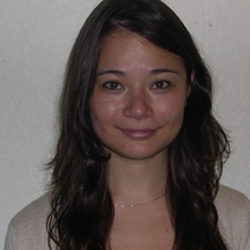
On October 23, the BSA and the Young Architect Forum of New England joined four other AIA chapters in hosting the first annual AIA Leadership Institute, organized by the AIA Civic Center for Leadership and sponsored by the College of Fellows. The one-day national conference focused on leadership education to empower attendees to lead in their firms and their communities. Attendees included students, young and experienced architects, landscape architects and designers from New York and the New England region.
The local event was moderated by 2014 BSA president Emily Grandstaff-Rice and kicked-off with a keynote from former AIA president Helene Combs Dreiling, FAIA, followed by six presentations including local and national speakers.
A diverse group of local speakers presented three panels: Life as a Young Leader in Architecture, Gender and Race in the Workplace, and Unconventional Paths to Design Leadership. They encouraged attendees to lead by building their communities, standing up for themselves and others, taking risks and continuing to pursue their passions.
The national program, broadcast live from Washington D.C., touched on several different aspects of leadership including followership, servant leadership and what it means to be a citizen architect.
To learn more about the Leadership Institute or read a recap of the conversation, check out the website or Twitter: #aiali15 and #citizenarchitect.
A few of PAYETTE’s young architects and designers attended the event and share their impressions.
The @BSAAIA #AIAli15 wraps up in Beantown. We laughed. We played. We power posed. We’re off to #lead. @AIALeaders pic.twitter.com/atH7dH7olB
— EmilyGrandstaff-Rice (@egraia) October 23, 2015
Hilary Barlow
The diverse leaders from each panel discussion emphasized the importance of assuming the role of citizen architect. A citizen architect is an architect who uses their knowledge and design skills to positively impact the community. This includes staying informed on local, state and federal issues as well as writing, earning appointment to boards and through elective government office. The design work we do at PAYETTE significantly impacts the science and healthcare communities and their surrounding environments. Not only can we influence the community through the complex programs we design for, but we can take it one step further and actively participate within our community.
Often leadership within the office and profession becomes the priority and it can be difficult to find time to also be a leader within our greater community, but as Michael Ayles stated in the program, “you are not going to make a difference if you are an architect talking to architects about architecture.” During the day, we talked about leadership being action, not position and engaging in civic participation is an opportunity architects have to transform society and reconceive the role and profession of architecture. It was inspiring to share and hear from other participants ways to be more effective leaders and how to find opportunities to improve ourselves. I left the leadership institute with a new perspective how followership, servant leadership and how a citizen architect can make a local and national impact.
Alison Laas
At the end of each panel discussion, moderator Emily Grandstaff-Rice, asked each panelist: What’s next? This question was not only a way to allow the panelists to inspire the audience, but was a call to action for everyone present to engage in the mission of the Leadership Institute beyond the conclusion of the inspiring panels, speeches and workshops of that day.
Several of the panelists answered the question of what’s next not in terms of what is next for them in their own career path, but in terms of what should be next for architecture as a profession, and how we as leaders in our profession can engage with education and the public to influence what is next for architecture.
The idea of using education as a leadership tool to improve the state of the architecture profession resonated with me. I have incorporated teaching into my practice of architecture because it is something that engages different parts of my design intellect no matter what phase of design I be engaged in at work. I also teach because I love the “aha!” moments experienced by my students when they finally realize how their design can impact human experience. Many of the speakers of the AIA Leadership Institute have helped me reframe the importance of teaching in my career as a way to lead my students to become the architects who will continue to change our profession. To be this type of leader, I need to instill in my students not only a passion for design, but an understanding of the challenges that we face as a profession in increasing and maintaining diversity throughout all career levels and in advocating our value to the general public. Professional practice education that addresses the realities of working in architecture can inspire the next generation of architects to demand diversity and equity is just as important as design education.
The discussion of how my role as an architectural educator can be a form of leadership to improve our profession was inspiring and a great motivator to become more active in impacting what is next.
Jenny Ratner
James Kostaras, Senior Fellow at the Institute for International Urban Development, led a fascinating workshop on collaboration and leadership at the Boston AIA Leadership Institute. The workshop used interactive group exercises based on the prisoner’s dilemma to explore cooperative behavior.
Many of us were already familiar with the prisoner’s dilemma from reading about it in Econ 101. However, going through the exercise and analyzing our collective results within the framework of the Leadership Institute provided fresh insights on leadership and cooperation for me.
Thinking of leadership from a moral perspective is directly related to cooperation. This is important because, despite people’s natural inclination to cooperate, the slightest suspicion about others’ trustworthiness can quickly escalate into betrayal. In the context of the prisoner’s dilemma, leadership can be a tangible technique of ripping up the “defecting” cards so that all members must cooperate. Alternatively, a leader can build trusting relationships with the other group members. This method makes everyone feel obligated to cooperate. In this sense, a leader is one who elevates the moral level of the group to prevent betrayal.
Another lens through which we analyzed the prisoner’s dilemma was that of gender. Iterating through the exercise amongst multiple groups with different gender make-ups, it was clear that women tend to prioritize the group’s welfare over the individual’s. This served to corroborate many of the issues we discussed during an earlier panel, “Gender and Race in the Workplace.” For issues such as negotiation and advocacy, it is vital that we understand this tendency so that we can work to address it in a productive manner.





